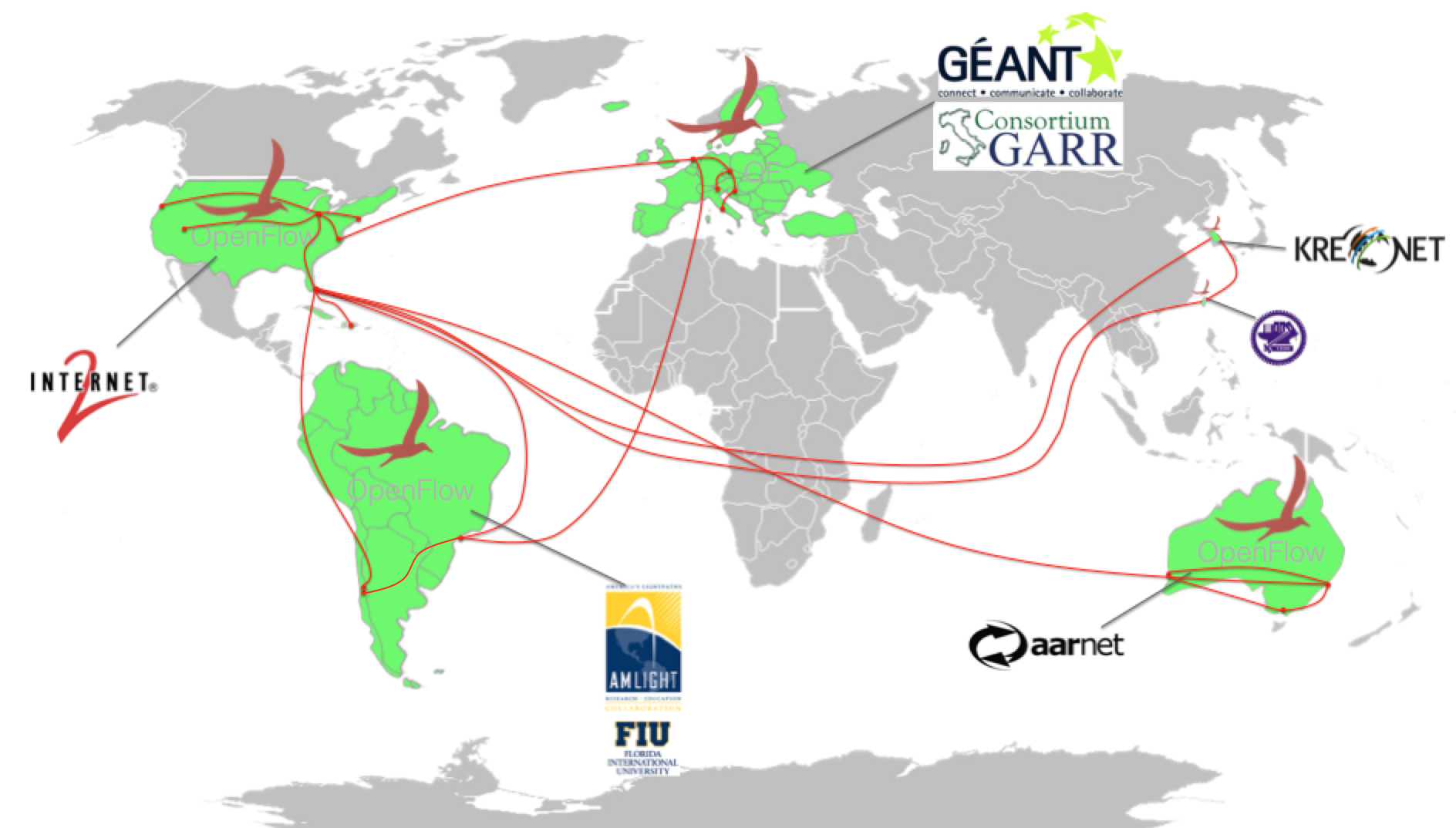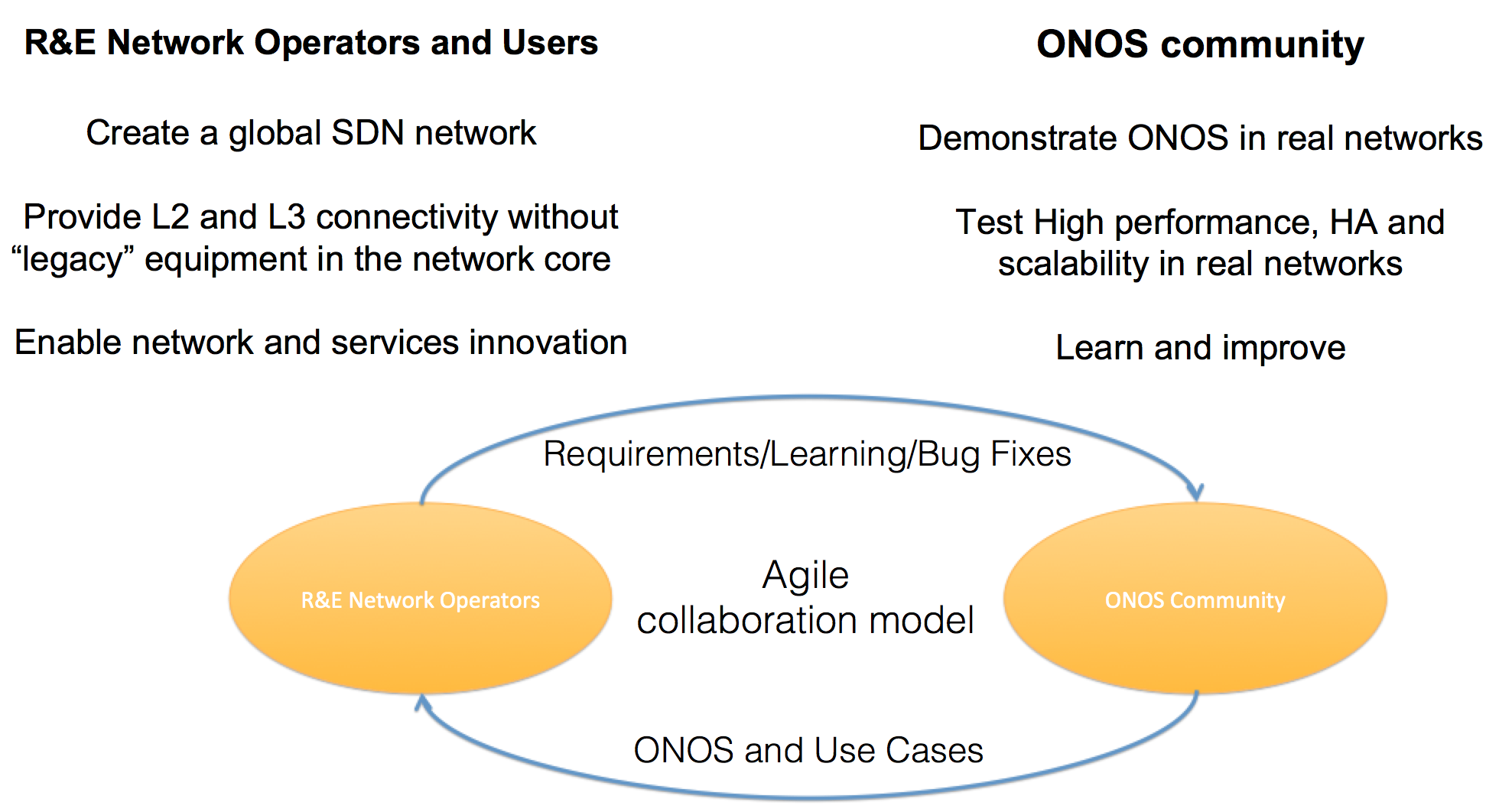Overview
Goals and Motivations
By definition, RENs are the perfect environment where to deploy SDN. Historically, RENs are the ones providing high-quality production network services to Academia and Research Centers around the globe, while maintaining a standing leadership in network innovation. While innovating on the computing has been facilitated by the introduction of open hardware interfaces and Open Source software, network research has always been an hard - if not impossible job. SDN (and ONOS) gives the ability to Academia and Universities to run Carrier Grade networks, while enabling innovation.
The goal of the deployment is to provide L2 and L3 connectivity to end users, without using any legacy device, while enabling innovation. Deploying ONOS in RENs give the ability to the Academia and the R&D Departments to develop new network applications, that can then be validated in real network on hardware, thus being able to get used in production.
Deploying ONOS in production networks is important because it demonstrates the ONOS ability to work at scale on real infrastructures while providing High Performances and HA.
Moreover, the feedback from the Teams running the production networks is continuously translated into new requirements for the next releases of ONOS. Once the new features get implemented, ONOS gets deployed again. This is what we usually call Agile Deployment Model.
- Europe (through GEANT PAN European Network GTS testbed facility www.geant.net)
- Italy (through GARR network (www.garr.it)

